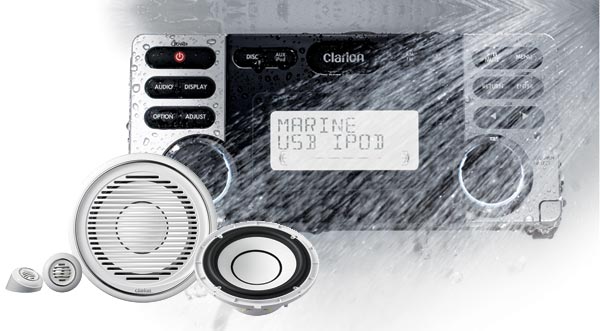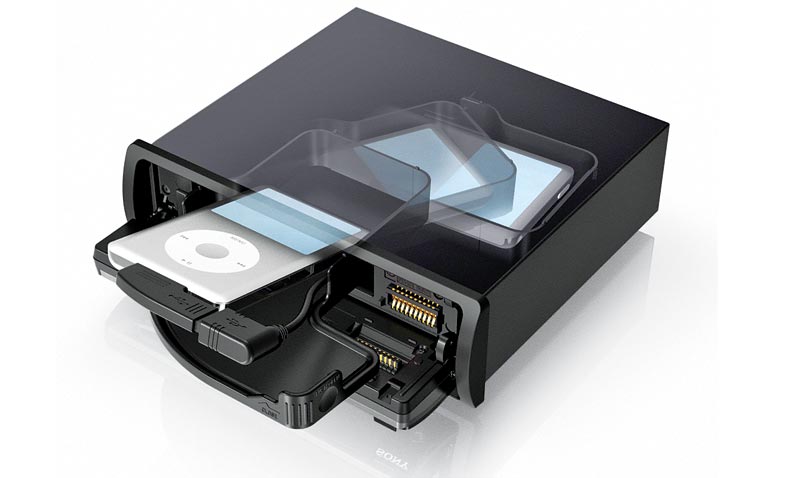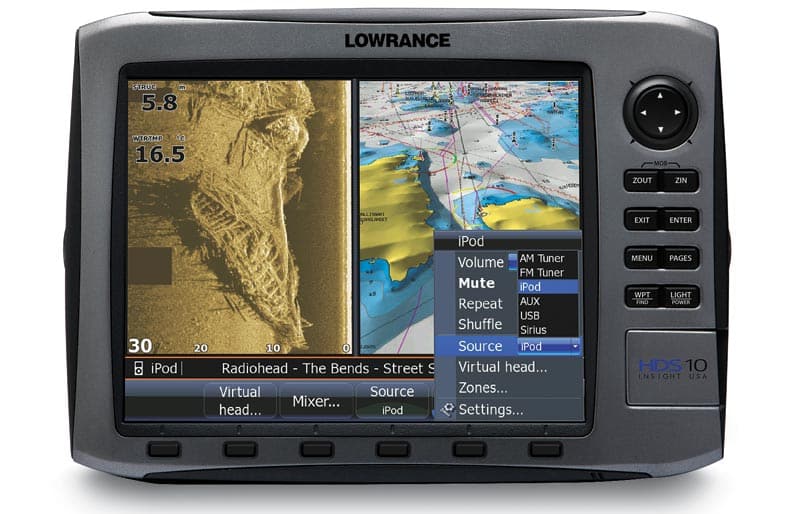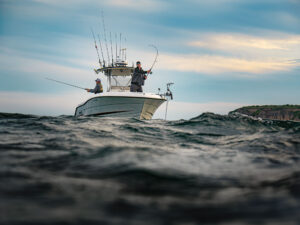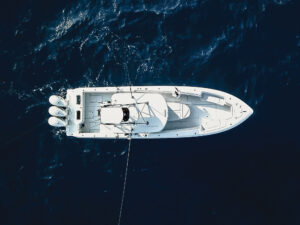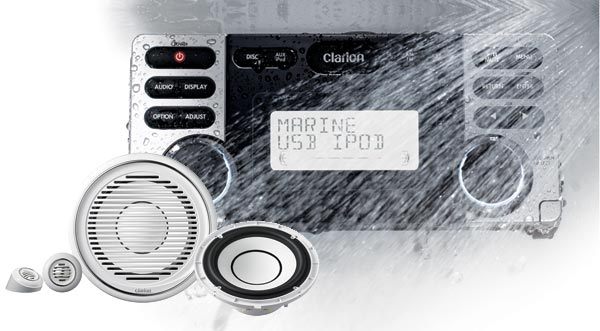
Choosing a Marine Stereo
Wind, salt spray, bright sun, pounding seas — the exhilaration of the ocean — a siren’s call for souls so afflicted. But what we can’t resist, our marine-audio systems truly must. It’s do or die in the open-air, saltwater world.
Audio companies “have two elements to overcome in the marine environment. One is the effects of ultraviolet radiation and salt,” says Alan Wenzel, vice president of marine divisions for JL Audio (www.marine.jlaudio.com) in South Florida, “and the other is the acoustical portion, the wind and engine noise.”
In other words, your standard car stereo painted white just won’t do. In fact, today’s better marine-audio systems battle corrosion and water ingress, absorb shock and feature all the geegaws of land-based electronics, including MP3 solutions, Sirius/XM options and even video.
Performance Ratings
Companies like JL Audio, which makes speakers, amplifiers and subwoofers, put their components through hours of testing in salt and UV chambers. Wenzel and others point to specific characteristics anglers should look for when considering devices to amplify their boat tunes.
While no rating system can tell you whether an audio component is properly “marinized,” several alphanumeric designations can provide important clues. IPX ratings, created by the International Electrotechnical Commission, are based on a scale of 0 (no special protection) to 8 (protected against continual submersion).
A number of audio components carry an IPX5 rating and a few have IPX6 status. IPX5 means the device is protected against water jets — as from a hose — at all angles at a specified flow rate and pressure, and at a distance of 3 meters. IPX6 carries protection against heavy seas and water jets at even higher pressures and flow rates.
Some electronics, including many of today’s VHF and GPS handhelds, carry IPX7 ratings. Those units may be submerged for 30 minutes at a depth of 1 meter.
ASTM International, originally the American Society for Testing and Materials, sets standards for salt spray (B117) and UV resistance. Look for or ask about these designations when shopping for marine stereos.
“If you take our IP600 unit out of the box, you see the entire rear case is an enclosed die-cast chassis,” says Todd Crocker, national sales manager for Fusion Electronics (www.fusionelectronics.com). “All the cables are molded, not just open contacts or wire leads. That’s kind of foundational.”
Other marinization techniques include coating the circuit boards to resist condensation and using surface-mount technology, Crocker says. Surface-mount components sit directly on the circuit board without perching on “legs.” Surface mounting reduces the effects of vibration.
Multifunction Units
Years ago, mobile radios played only AM stations. The FM band for popular music spread quickly as stereos developed to play back tapes, then CDs, and finally digital music files and satellite radio. On the water, stereos evolved similarly, though water-resistant solutions took extra time to perfect.
Now the digital tunes we carry on iPods and MP3 players join us aboard vessels. Some audio systems employ an auxiliary cable (on the rear panel for marine units) that hard-wires a player to the stereo; others come with internal docking systems, and several offer USB connections so anglers can plug iPods directly into the system or opt to leave the expensive portable electronics at home and bring a jump drive aboard.
Sony’s new DSXMS60 ($199.95, www.sonystyle.com) digital-media receiver features a “tune tray” inside the unit that secures any USB device (an iPod adapter is included) so it’s out of the elements. The tray recharges the player’s battery, and you control iTunes playlists through the unit’s display.
Clarion’s CMD7 ($399.99), a marine CD/USB receiver, includes a USB port on the back of the chassis. Anglers use a jump drive or connect their i-device using its own USB cable.
Fusion, which introduced the world to internal iPod-docking technology, offers its 600 series — including a stereo with a dock inside (MSIP600, $349.99) and other units such as the smaller MSRA200 ($199.99) that can incorporate a supplemental dock. Crocker says Fusion also designs its vessel audio systems with the user demographic in mind: men over 40. “We use iconic keys, not text, and the smallest key is still the size of the tip of a male index finger,” he says. “All the major functionality is through a menu structure just like other electronics on the boat.”
Completing the Package
In fact, collaboration between Fusion and electronics manufacturer Navico resulted in the debut of the SonicHub ($299 to $399) last year for Lowrance and Simrad users.
SonicHub integrates audio through an NMEA 2000 connection to your boat’s multifunction display. Anglers control audio (and video from iPod devices) on the same screen as they’re watching the sounder.
Anglers also must consider amplifiers, subwoofers and speakers in their integration plans. Larger vessels offer more “listening areas” than smaller vessels and might require a marine-quality amplifier to push the sound. Subwoofers help overcome the ambient noise of engines and wind.
“Unlike in a car where the windows are up and the AC is on, in a boat, you have wind noise and the music is not contained in a closed environment,” Wenzel says. However, each boat’s configuration and the owner’s planned usage determine how the system lays out. For a good quality system, expect to pay $800 to more than $2,000.
Crocker suggests considering Class D (digital) amplifiers, which actually consume less power than Class AB amps while producing more power. Speakers should also be marinized to resist spray and UV rays; Wenzel says one popular material for building speaker baskets is Centrex — a marine polymer with UV inhibitors. Also look for true marine stainless-steel, nickel-plated connectors and motor assemblies that are sealed to the elements, he advises.
With a properly marinized audio system that generates enough quality sound, your next trip might not magically produce more fish, but it just might stir up a real symphony.
